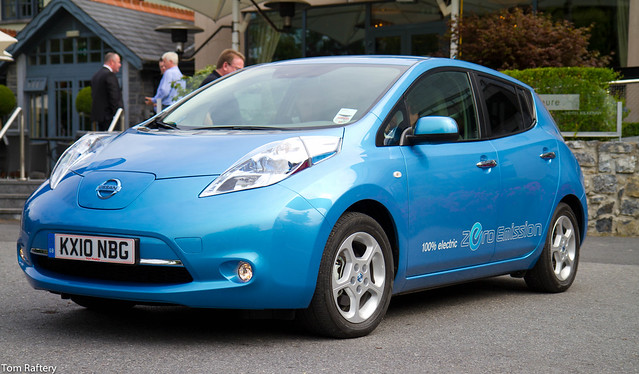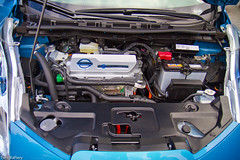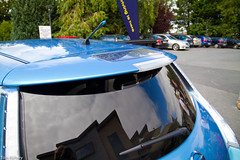
The graph above is taken from the Greenhouse Gas Footprint page of SAP’s Sustainability Report and it shows SAP’s global GHG footprint for 2010. Of particular note in this graph is that globally SAP’s 2010 carbon footprint for corporate cars is 24%. This is up from 23% in 2009 and 18% in 2008. This is obviously a problem for SAP who have publicly committed to reducing their Greenhouse Gas Emissions 51% (from their 2007 baseline) by 2020.
In an effort to help address this SAP decided to embark on a small scale Electric Vehicle (EV) project called Future Fleet. Future Fleet uses a fleet of 30 EV’s charged solely from renewable sources supplied (along with the charging infrastructure) by project partner MVV Energie.
SAP are using this project to test employee attitudes to EV’s but also to test their own EV eMobility charging and fleet management software which is being developed, and tested in tandem with the project. The software allows employees to log in and book cars for specific journeys between SAP sites in Germany, or for a day or a week at a time. The software also intelligently prioritises charging of cars based on expected upcoming journey duration, current battery state and other factors.
All good and laudable stuff. However, one major issue I have with the project is that for purely political reasons SAP chose an electric car for the project which seemed to be designed with the distinct purpose of turning drivers off EV’s. This happened because the project was part-funded by the German Federal Ministry for the Environment, Nature Conservation and Nuclear Safety and they insisted that SAP use a German-made car for the project. I have no idea of the legality of this stipulation but at first glance it would seem contrary to EU legislation.
In any case, SAP went to several large German manufacturers who were unable to provide EV’s for the project. They then found a local co. who took Suzuki car bodies (if memory serves) and installed a purely electric drive-train. This resulted in electric cars which have a number of issues:
- the cars’ look ugly – giving lie to the idea that EV’s are small, ugly, box-like cars
- the cars’ are incredibly basic inside – no electric windows, no electric mirrors, and a manual transmission (no, really!) and
- the cars’ energy management interface is horrible – it is an unreadable single-line LED, as opposed to the Windows-type UI now normal on commercially available EV’s and hybrids
This wouldn’t be so bad except that with SAP’s carbon emissions from corporate cars on the rise, SAP needs to be making EV’s an attractive proposition for its employees. With these cars, SAP risks turning its employees off EVs, and sabotaging its own GHG reduction commitments.
You should follow me on Twitter here.
Photo credit Tom Raftery






